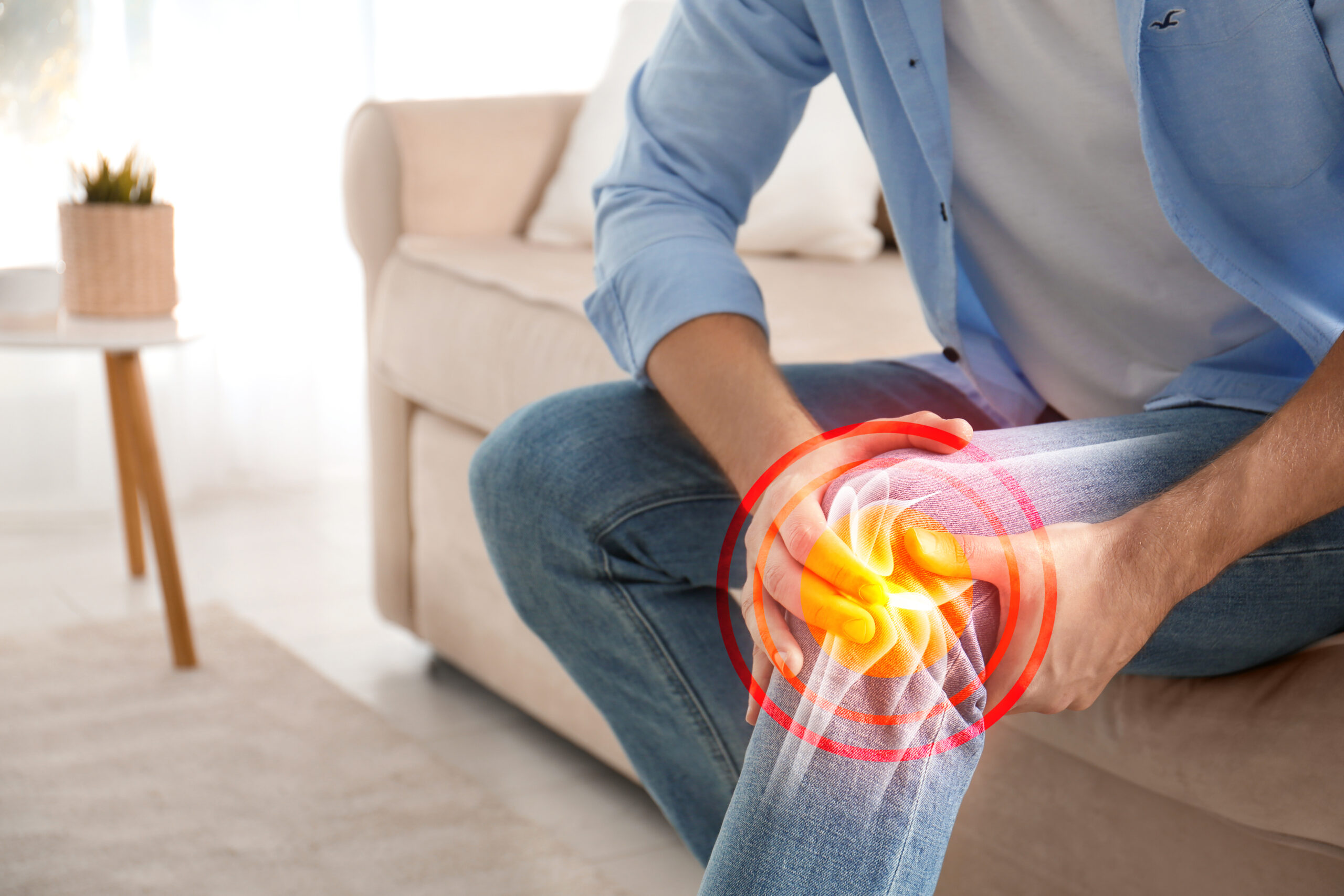It’s not unusual to have sore knees and seek out knee pain treatment the older you get. Fortunately, hurting or aching knees usually aren’t a sign of anything serious. Muscle strain, tendonitis, and arthritis are all possible causes. There are even times when a cause cannot be determined.
After a few days, you should start feeling better if you’re experiencing knee pain while at home. However, the pain is more likely to occur as you age. People who carry extra weight on their bodies are also more likely to suffer, and it’s also possible for pain to creep in from a sports injury.
It’s important to note that surgical interventions may not always be needed. Sometimes all it takes is some tender loving care. Some of the best non-surgical treatment for knee pain has been developed over the past several years. If you’re suffering, pain management experts have a variety of options to relieve your symptoms before the damage or inflammation becomes too severe.
For years now, many patients have reported in post-visit discussions that knee pain acupuncture is the best treatment for knee joint pain that relieves the pain without surgery. However, a qualified acupuncturist is required for this procedure, and proper consultation should be conducted before you begin treatment.
That’s just one solution. Today’s research and development has brought an entire set of options into the medical spotlight for those who are in anguish, misery, or discomfort every day.
Acupuncture Essentials
In addition to reducing knee pain, improving function, increasing range of motion, decreasing inflammation and improving sleep, knee pain treatment through acupuncture can also enhance your overall health and wellbeing. A thin needle is inserted into specific points around your knee, a practice that dates back centuries to traditional Chinese medicine.
“Meridians,” which are energy channels throughout the body, are believed to be connected to these points. Pain is naturally relieved by needle insertion because endorphins are released. The benefits of acupuncture include a reduction of inflammation, improvement of circulation, and reduction of pain — all of which make your life, mobility, and health easier to manage. Combining acupuncture with other pain treatments, such as physical therapy and exercise, has proven to be the best non-surgical treatment for knee pain for hundreds of thousands of patients worldwide.
In most cases, a series of treatments are needed, each lasting 30-40 minutes. The needle is usually inserted without pain, although there may be a mild pricking sensation for some patients. After the treatment, you may feel tired or sore, but these symptoms usually go away within a few hours. With this established method, pain can be safely and effectively treated.
Non-Surgical Knee Pain Treatment Options
For some patients, a number of medications can be injected directly into the knee — a solution for some who are exploring several types of knee pain treatment. To reduce inflammation, corticosteroids are used. Infusion therapy reduces inflammation by delivering medications intravenously and directly into the muscles.
To improve flexibility and joint support for other patients, rehabilitation medicine and exercise programs can stretch and strengthen the muscles and soft tissues of your knee joint. You may also be able to alleviate knee pain by changing the way you perform your daily activities, thereby limiting excessive strain on your knees. Therapeutics and other apparel designed specifically for knee pain can help alleviate the pain.
Some patients use a special brace to stabilize their knee joint — and it can work for a long time. The purpose of knee braces is to support and balance your joint, reducing pain and inflammation, as well as strengthening muscles. This brace decreases friction between bone surfaces, reduces pain, and increases mobility by putting pressure on the sides of the joint.
If you Don’t Want to use a Knee Brace
You may be asked to modify your daily routine, which may include reducing your weight and avoiding activities such as running and performing low-impact exercises, which will reduce knee stress. Also, some patients benefit from nutraceuticals when using them to help maintain knee joint health. Bones and soft tissues may benefit from vitamin and other supplements that contain glucosamine and chondroitin. Nonetheless, the best treatment for knee joint pain for so many victims is out there, waiting to be utilized.
Knee pain is also commonly treated with over-the-counter pain relievers, such as acetaminophen and ibuprofen. Temporary pain relief can also be achieved with topical “analgesics” — essentially, pain medication that’s applied directly to the skin, such as muscle rubs. Other prescription medications may also be recommended, such as antirheumatic drugs and biological response modifiers.
At the end of the day, you should consult a qualified and trained pain management specialist for the best non-surgical treatment for knee pain.
Joint Anatomy & Knee Pain
Knees are the largest joints — and some of the most important — in the body, which makes knee pain treatment a top priority for so many patients. Your knee is composed of bones, ligaments, cartilage, and tendons.
Three bones meet at the knee joint. These are the thighbone (also known as the femur); the shinbone (also known as the tibia); and kneecap (also known as the patella).
Bones are connected by four major ligaments. The collateral ligament and cruciate ligament keep your knee in place by holding your bones together. However, your knee also has articular cartilage and meniscus cartilage.
Altogether, the combined toughness and durability of these special parts work to cushion and stabilize your joints — intertwined with tendons that connect muscle to bone. The best non-surgical treatment for knee pain starts with pain management specialists who use their knowledge and expertise of your knee to pinpoint the right treatment for your specific situation.
Advice for Daily Living: Knee Pain Treatment
Whether you have knee pain from a recent injury, chronic arthritis, aging, or a different life or health issue, there are many things you can try to alleviate the pain while simultaneously looking into the right knee pain treatment:
- Your footwear should be a priority. You can reduce knee pain by wearing cushioned insoles. Putting special insoles into your shoes may be recommended by your doctor if you have osteoarthritis of the knee. Consult your doctor or physical therapist to determine which insole is right for you.
- Make sure your home’s temperature is set at a comfortable level. To ease swelling and numb pain, use a cold pack for 48 to 72 hours after a knee injury. You can use a plastic bag filled with ice or frozen peas. For best results, use it three or four times a day for 15 to 20 minutes each time. Wrap your ice pack in a towel to protect your skin. After that, you can warm things up by taking a warm bath, using a heating pad, or using a warm towel three or four times per day for 15 to 20 minutes each time.
- Consider using a walking aid if necessary. Your knee can be relieved of stress by using a crutch or cane. You can also maintain stability by wearing knee braces and splints.
- Acupuncture treatment for knee pain shouldn’t be overlooked. It is commonly used to relieve many types of pain and may help. Many patients find that the best non-surgical treatment for knee pain comes through having needles inserted at specific points on the body by an expert acupuncturist.
Even More you can do
- Stay physically active. You can reinjure your muscles if you rest too much. Make sure you stick with an exercise program that is safe for your knees. Talk to your doctor or physical therapist if you aren’t sure which motions are safe to participate in.
- Take care of your knee by resting, applying ice, using compression care, and elevating it. The treatment is suitable for minor knee injuries or flare-ups of arthritis. Elevate your knee, rest your knee, apply ice to reduce swelling, and wear a compressive bandage.
- Maintain a healthy weight. The stress on your knee will be reduced by losing weight. It isn’t even necessary for you to reach your “ideal” weight. There is still a difference to be made with smaller changes.
- Maintain a healthy heart. The muscles of the heart are strengthened by cardio exercises. The goal is to keep your muscles limber while lifting weights. Your weight will stay stable and you’ll feel stronger overall if you do cardio. There are many cardio exercises you can do, such as walking, swimming, water aerobics, stationary cycling, and elliptical machines. Aside from easing stiffness and improving balance, Tai Chi may also help ease stiffness.
- Limit your risks. Knee pain or instability can increase the risk of a fall, which can lead to further knee damage. If you need to reach something on a high shelf, use a sturdy ladder, foot stool, and make sure your home is well lit.
- Don’t hesitate to ask the experts for help.Having a doctor examine your knees if you are experiencing new pain is a good idea. Identifying the issue as soon as possible can prevent further damage. The best knee pain treatment starts with seeing a pain management specialist.
Could My Knee Pain be Osteoarthritis?
Pain in your knee may develop over time, may strike suddenly, or may recur repeatedly — leading you to question the legitimacy or efficacy of knee pain treatment. Most of the time, the pain isn’t due to arthritis, but it just might be arthritis in some cases.
The most common type of arthritis is osteoarthritis. People of all ages can be affected, but those over 50 are most likely to suffer from it. You might feel that your knee is stiff and painful when you have osteoarthritis of the knee. One or both knees may be affected.
During the day, the pain might be worse, and when you move your knee, it might improve. It’s common to feel stiff in the morning, but it won’t last more than 30 minutes. You may feel osteoarthritis pain throughout your knee, or you may feel it only in a certain area, such as the front or side. When you go up or down stairs, your knee might feel worse.
“Degenerative joint disease” or “wear-and-tear arthritis” are terms people use to describe osteoarthritis, the most common form of arthritis. Knees, hands, and hips are the most commonly affected joints. As cartilage within a joint breaks down, bone changes underneath. Still, the best non-surgical treatment for knee pain that’s right for you can be discovered with proper medical consultation and planning.
Medications are not the only way to reduce arthritis pain in adults. Regular physical activity can be as effective as over-the-counter medications in treating arthritis pain in adults. Aside from improving physical function and mood, physical activity also reduces disability and anxiety. For most adults, walking, biking, swimming, and other water activities are great ways to ease arthritis pain.
Wellness and Pain Can Help
A range of knee pain treatment options are available at Wellness and Pain. We offer conservative treatments, routine visits, and minimally invasive quick-recovery procedures. We can keep you free of problems by providing lifestyle education and home care advice to help you avoid and manage issues, quickly relieving the conditions inhibiting your life by using the best non-surgical treatment for knee pain.
At Wellness and Pain, we personalize patient care plans based on each patient’s condition and unique circumstances to relieve pain, improve mobility and mental space, and improve your overall health.











